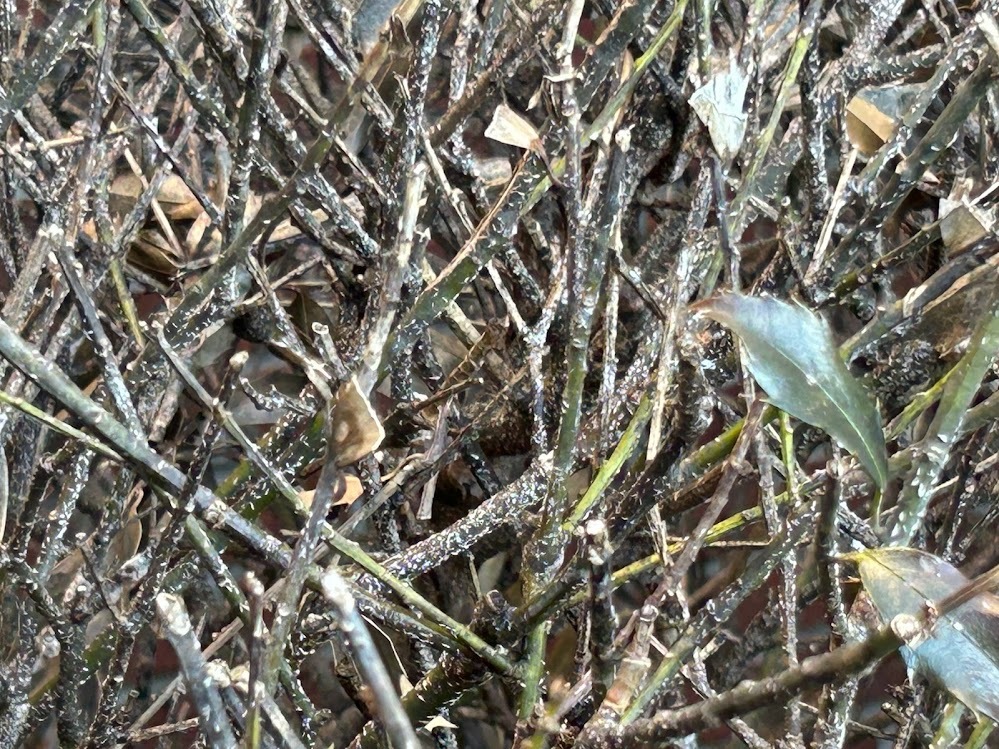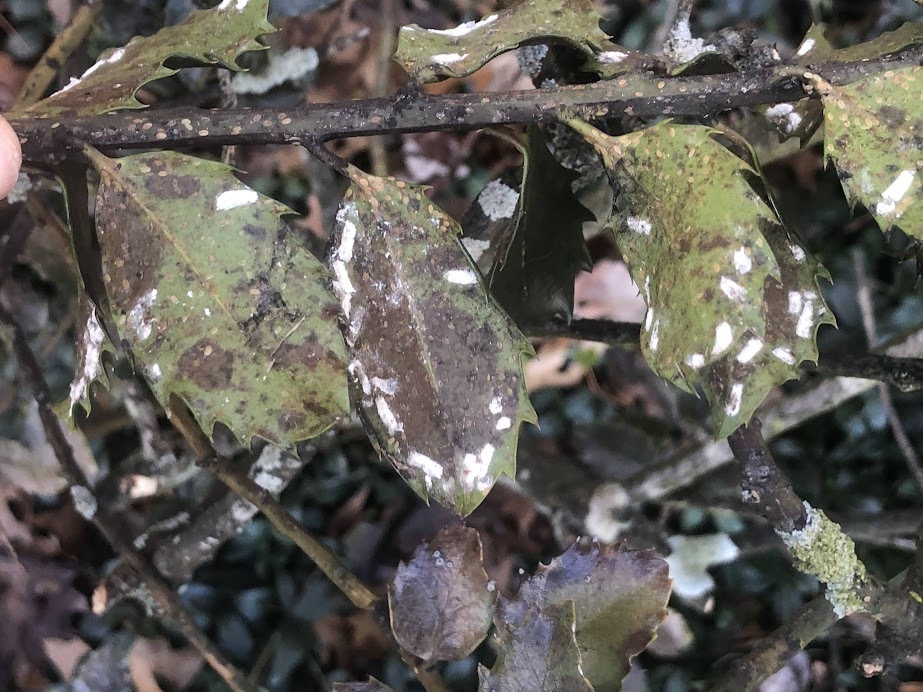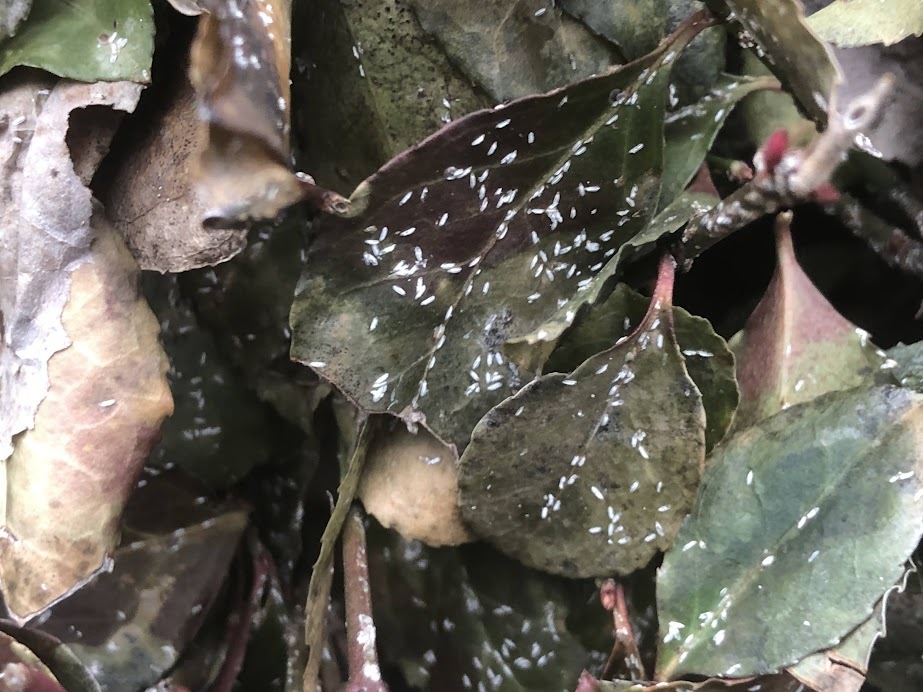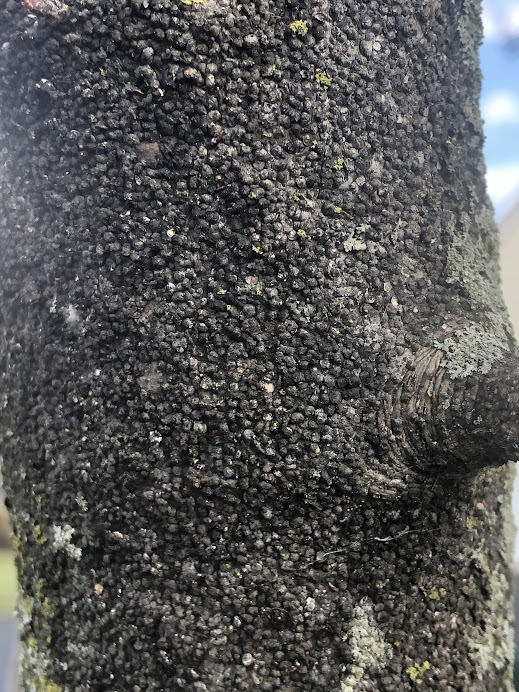It’s that scaly time of the year…

In winter site inspections, we are finding a lot of Japanese maple scale on a lot of different plants, many you may not expect. This is a blue holly loaded with Japanese maple scale.

This is both mature and immature Camellia scale on blue holly.

Euonymus scale on purple wintercreeper euonymus.

Gloomy scale on red maple.
Scale insects can be difficult to control, particularly heavy infestations. Right now is the time to treat with dormant oil. Later in the seasons come systemics and insect growth regulators (birth control for scale).
Native scale insects normally attack already stressed plants. Non-native invasive scale insects can attack healthy trees and shrubs. Despite its name, we have found Japanese maple scale on a wide range of plants including but not limited to holly shrubs, Japanese maple, Autumn Blaze maple, serviceberry, burning bush, sweetbay magnolia (the only scale insect we have ever found on sweetbay magnolia), crabapple, Callery pear, and hawthorn.

